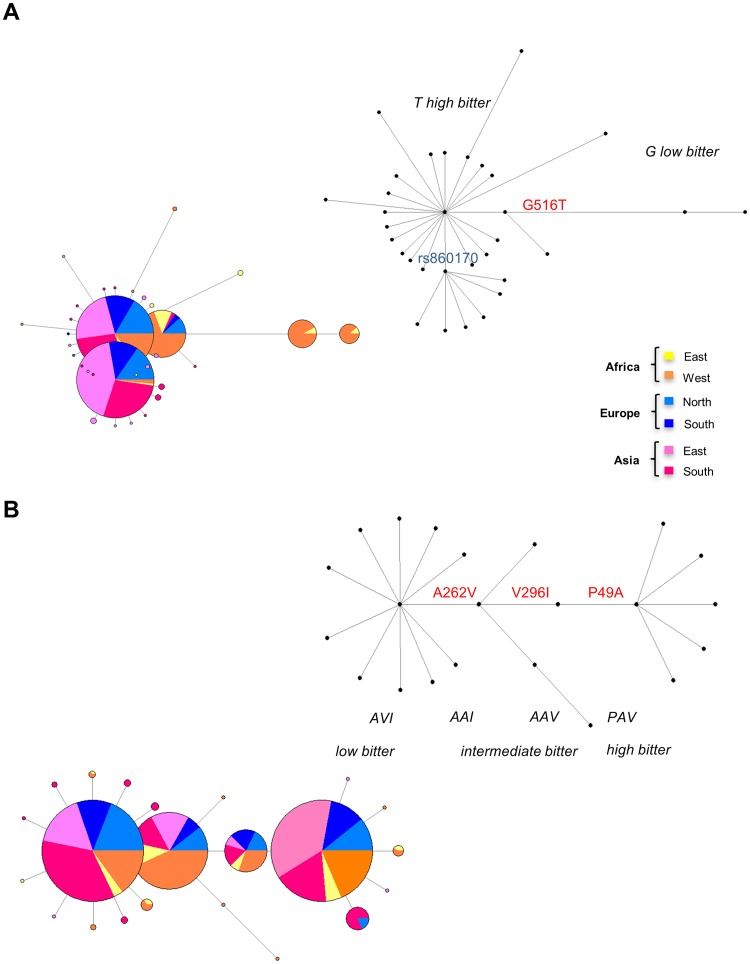Introduction of TAS2R45
TAS2R45, also known as GPR59, is a member of the G-protein coupled receptor T2R family (TAS2Rs). The perception of bitter taste is mediated by the family. Encoded by the gene TAS2R45, the receptor contains 299 amino acids, and the molecular weight is predicted to be 34 kDa. From the predicted results performed using TOPCONS, we can see TAS2R45 has 7 transmembrane regions and 1 glycosylation site (161) and some other most conserved sites. It is documented that TAS2Rs are mainly expressed in bitter taste cells of our tongue and palate epithelia, and function with G-protein to transduce intracellular signals.
| Basic Information of TAS2R45 | |
| Protein Name | Taste receptor type 2 member 45 |
| Gene Name | TAS2R45 |
| Aliases | G-protein coupled receptor 59, GPR59 |
| Organism | Homo sapiens (Human) |
| UniProt ID | P59539 |
| Transmembrane Times | 7 |
| Length (aa) | 299 |
| Sequence |
MITFLPIIFSILVVVTFVIGNFANGFIALVNSTEWVKRQKISFADQIVTALAVSRVGLLW VLLLNWYSTVLNPAFCSVELRTTAYNIWAVTGHFSNWPATSLSIFYLLKIANFSNLIFLR LKRRVKSVILVVLLGPLLFLACHLFVVNMNQIVWTKEYEGNMTWKIKLRRAMYLSDTTVT MLANLVPFTVTLISFLLLVCSLCKHLKKMQLHGKGSQDPSTKVHIKVLQTVISFFLLRAI YFVSVIISVWSFKNLENKPVFMFCQAIGFSCSSAHPFILIWGNKKLKQTYLSVLWQMRY |
Function of TAS2R45 Membrane Protein
As a member of TAS2R family, TAS2R45 can recognize bitter compounds various in chemical structure. So, it plays a key role in the perception of bitterness and is gustducin-linked. It also plays a role in sensing the chemical composition of the gastrointestinal content. It is reported that the activated TAS2R45 receptor may cause α-gustducin stimulated, mediate PLC-beta-2 activation, and result in the gating of TRPM5. Gene Ontology (GO) annotations related to TAS2R45 gene include bitter taste receptor activity. First identified in taste buds and subsequently discovered in extra-oral systems, TAS2Rs can bind different bitter compounds to generate different bitter tastes. TAS2Rs, as opposed to TAS1R proteins, have short extracellular domains and are located in circumvallate papillae, palate, foliate papillae, and epiglottis taste buds, with reduced expression in fungiform papillae. In the last decades, TAS2Rs have shown to be sensing potentially harmful bitter substances in the oral cavity to act with various physiological effects.
 Fig.1 Networks from TAS2R genes. (Valente, 2018)
Fig.1 Networks from TAS2R genes. (Valente, 2018)
Application of TAS2R45 Membrane Protein in Literature
This article reveals TAS2R45 membrane protein is an orphan G protein-coupled receptors (GPCRs) and doesn't respond to 46 synthetic bitter compounds.
This article demonstrates that patterns of diversity at TAS2R45 are primarily due to genetic drift by structural mapping, copy-number estimates, population genetic analysis.
This article finds a cognate agonist of TAS2R41 the same as TAS2R45 known as orphan receptor before. The newfound agonist of TAS2R41 is considered to be a “specialist” receptor highly selective for this antibiotic, which is the reason that the author forms a hypothesis TAS2R43 may be highly selective for bitter substances absent in out compound library.
This article surveys the available sequence variation data of TAS1R and TAS2R families from the 1000 Genomes Project Phase 3 and reveals that genes from these two families have experienced contrasting evolutionary histories.
TAS2R45 Preparation Options
In order to provide high-quality membrane protein preparation service, we have developed versatile Magic™ membrane protein production platform. Our experienced scientists will do their best to help you find a perfect match to meet your needs. Aided by our versatile Magic™ anti-membrane protein antibody discovery platform, we also provide customized anti-TAS2R45 antibody development services.
With abundant knowledge in this field, Creative Biolabs is dedicated to providing advanced membrane protein production service in the most cost-effective way. Aided by our leading-edge platform, we have successfully produced, purified, stabilized and characterized many challenging membrane proteins for global customers. If you are interested in the services, please contact us for more information.
Reference
All listed services and products are For Research Use Only. Do Not use in any diagnostic or therapeutic applications.